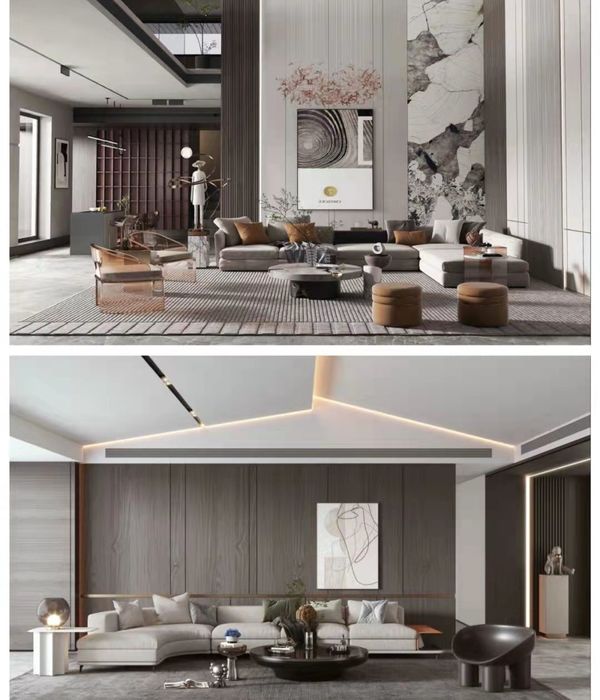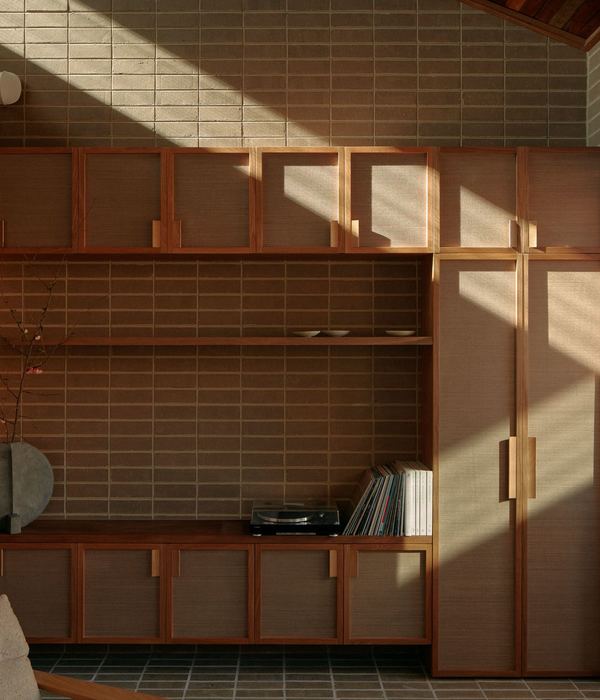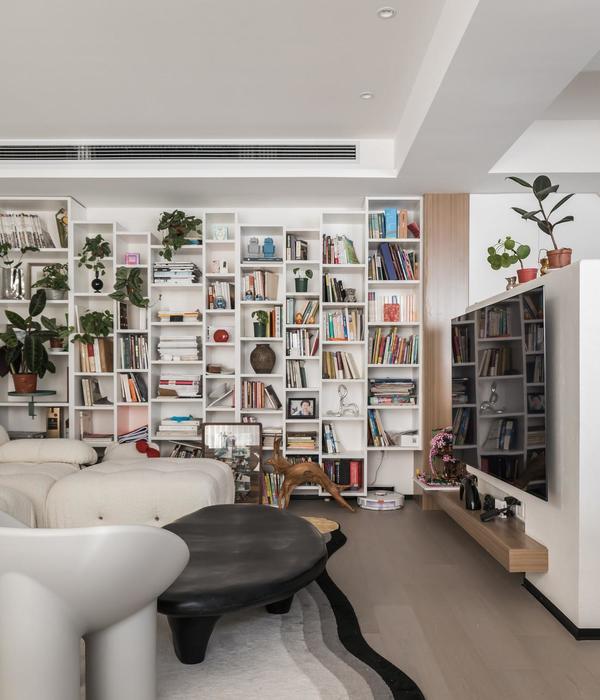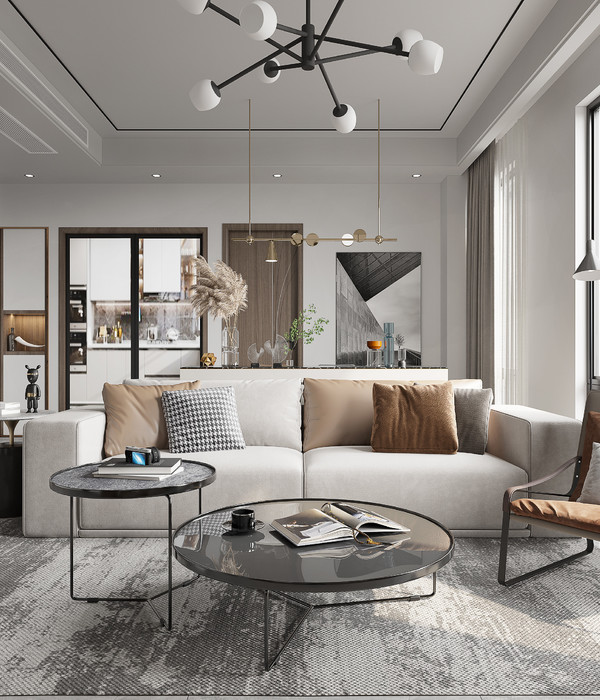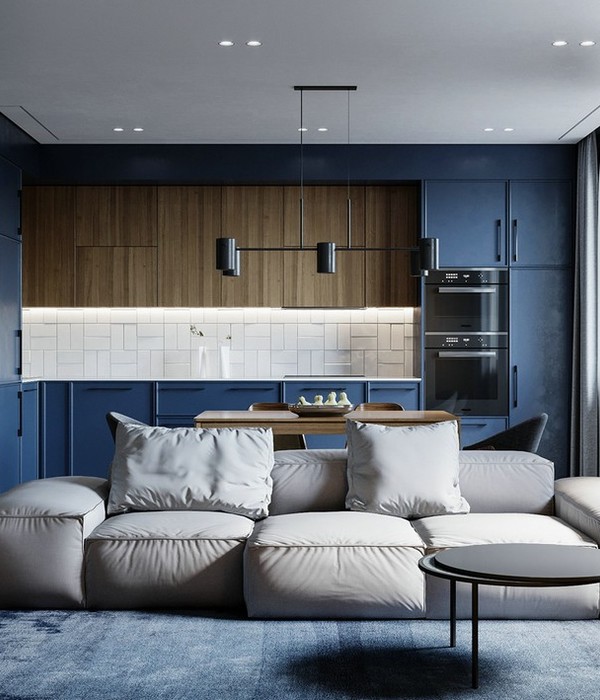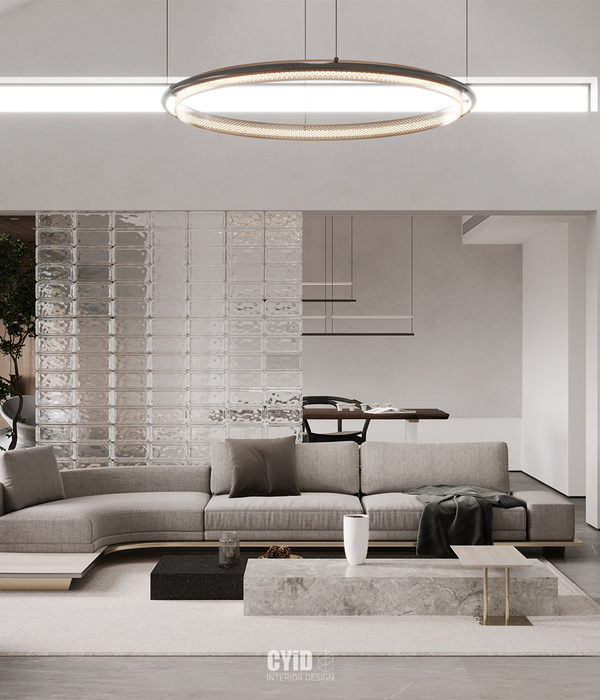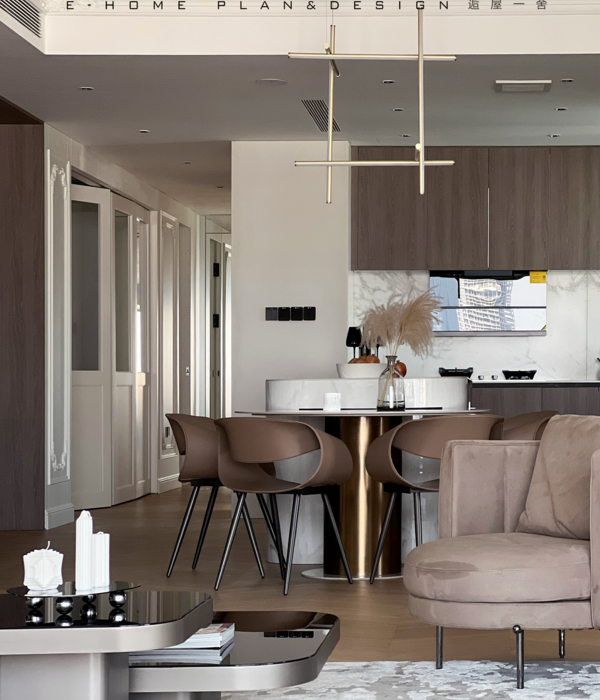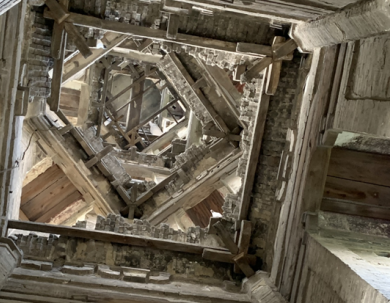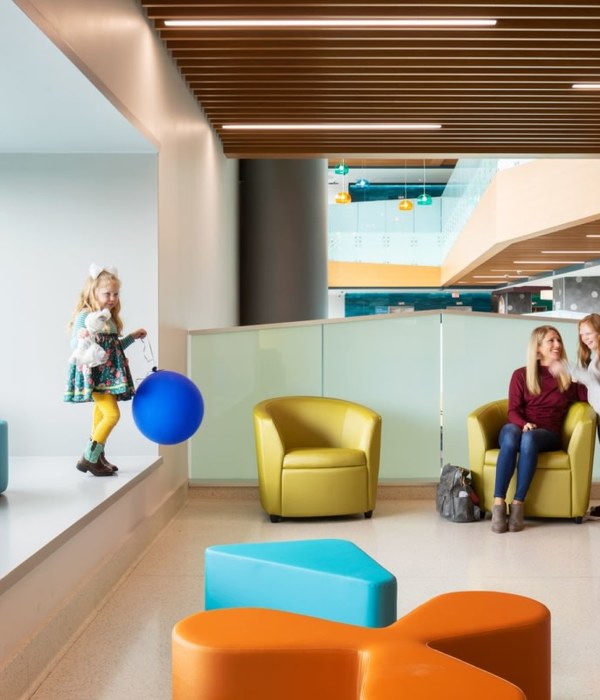- 项目名称:北京北苑百年柿子园中的“时间之屋”
- 设计机构:Robot 3工作室
- 建筑设计:潘飞,韩冬,王植,令重山
- 项目地址:北京市怀柔区上苑艺术公社
- 项目类型:住宅建筑
- 建筑面积:118平米
- 设计时间:2018.8-2019.3
- 建成时间:2019.7
- 摄影:Robot 3工作室
这个房子位于北京城的北边,燕山脚下。建筑用地在院落一角,以一棵柿子树为界,前宽后窄,六十平米左右。这里之前是一片柿子园,树龄都已过了百岁,站在园子里就可以感受到百年光阴凝结在这里,新建的房子应该是从这片地里土生土长出来,浑然天成而充满生命力度的。建筑分为两层,主体埋进地下两米。通过一条廊道拾级而上,端头有楼梯可直上屋顶,站在屋顶,园子的景色一览无余。
▼项目概览,overview
The house is located in the north of Beijing at the foot of yanshan mountain. The building land is in a corner of the courtyard, bounded by a persimmon tree, about 60 square meters wide in front and narrow in back. It was a persimmon garden here before, which’s trees age have been over hundred years. Standing in the garden you can feel a condensation of history. Thus the new house should be born and bred in these fields, full of life and nature. The house has 2 floors, with the main body buried 2 meters underground. Step up through a corridor, the end of the stairs can be straight to the roof, where the whole garden view can be take.
▼建筑分为两层,主体埋进地下两米,通过一条廊道拾级而上,the house has 2 floors, with the main body buried 2 meters underground, step up through a corridor
▼建筑用地在院落一角,以一棵柿子树为界,bounded by a persimmon tree, the building land is in a corner of the courtyard
▼廊道端头有楼梯直上屋顶,the end of the stairs can be straight to the roof
▼细部,details
一层的入口也藏在廊道的里处,抬步进屋由东向西依次排列书房、卫生间和卧室,卧室西侧开大窗,不用借景,景就在屋中,窗外的柿子树正好遮阳。贴北墙有一道楼梯,楼梯上方开有天窗,顺着光线下来,地下一层挑高三米四,靠西侧是一长条窗,清风穿堂而过,捎走夏日的湿闷,下午的时候阳光可以直扫屋尾。北墙开有一门,门外走廊连接着老房子的地下室,走廊的尽头开了一个玻璃屋顶的厨房,在这里烧出的菜可以称得上光合味道了。清早,雾气未散尽,日头刚打东边起来,在院子里四下走走,馀韵悠然。建造这个房子有些条件限制,一是高度,二是预算不能超过二十六万,所以为了满足使用功能,建筑的一部分须埋进土里,这个半地下室为了解决防水的问题,同时考虑到施工水准,所以整个建筑决定以混凝土为主要材料整体浇筑,这样也可以省去大部分室内装饰的工作以节省费用。一层南侧开窗墙面使用砌块砖,这些都是国内最基础和成熟的建造方式,完成质量会较有把握和冗余度。
The entrance of the ground floor is also hidden in the corridor, the study, bathroom, and bedroom are arranged from east to west. There is a staircase against the north wall, with a skylight above it. The underground floor is 3.4 meters high with a long window on the west side. The cool wind passes through the hall, taking away the humid summer air, and the sunlight could touch the whole room in the afternoon. The north wall is opened by a door, and the corridor outside connects to the basement of the old house. At the end of the corridor there is a glass-roofed kitchen, where the food is as it mixes the light. There are some limit conditions to build this house, one is the height, the other is the budget can not exceed 260,000 RMB. In order to fulfill functions, part of the house has to be buried in the ground. Solving the problem of waterproofing and considering the construction level, the semi-basement decided to take concrete as the main material to be poured as a whole, which could also save most of the interior decoration work and cost. The window wall on the south side of the second floor is constructed with block bricks, which are the most basic and mature construction methods in China, also the finished quality will have greater redundancy.
▼卧室西侧开大窗,景就在屋中,view from the bedroom to the courtyard
▼楼梯上方开有天窗,a staircase against the north wall, with a skylight above it
▼顺着光线来到地下一层,靠西侧是一长条窗,the basement with a long window on the west side
▼下午的时候阳光可以直扫屋尾,the sunlight could touch the whole room in the afternoon
如果仅仅只是满足于使用需求,那这个房子就只是一个普普通通的方盒子,如何破题?“时间”给出了答案,要做出嵌凿进时间的建筑。不用加法,做减法,以刀代笔,凿刻出来。中国的哲学和美学质别于任何国度,“志气和平,不激不厉而风规自远”是最质朴、根本的世界观。建筑是涵盖生存且远高于生存的认知途径,故而人的精神砌筑进建筑的烙印就不可磨灭。
If it’s just for use, the house will be simply an ordinary square box. How to break the routine? “Time” gives the answer, to design a house embedded in time. Do nothing add, do subtraction, chiseling out space with a knife as a pencil. The intrinsic nature of Chinese philosophy and aesthetics is different from that of any other country. “With peaceful ambition and least competition,one’s morals will spread faraway” is the simplest, most fundamental world view. Architecture is a cognitive approach that covers and far surpasses survival, therefore, people’s world view and view of life and death could be imprinted on architecture indelibly.
▼嵌凿进时间的建筑,a house embedded in time
▼模型,model
▼模型剖面透视,model section in perspective
▼剖面图,section
▼一层及地下一层平面图,1st floor and basement floor plan
{{item.text_origin}}

